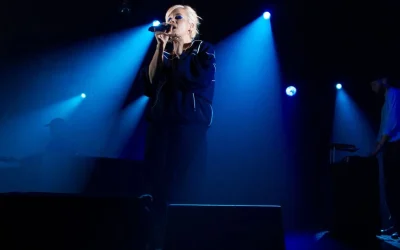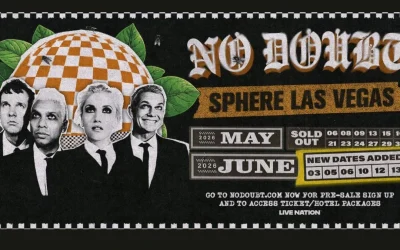Back in the late 1990s, one of the few things more inconceivable than the idea of millions of people communicating with one another online in 140-character bursts was the possibility that the Cleveland Indians would have trouble filling Jacobs Field on a nightly basis.
But, with social media exploding in popularity as the Indians battle an imperfect storm of factors that have rendered what is now known as Progressive Field empty most nights, Indians management is embracing Twitter, both as a communications and marketing tool, and hoping the interactivity will eventually result in better ticket sales.
The Indians, who became the first team in Major League Baseball to open a specific social media area (the “Tribe Social Deck”) for fans last year, expanded the facilities this year. The “Indians Social Suite” accommodates up to 12 fans who want to engage in social media throughout the game. These fans have wireless access as well as the same game notes that are provided to mainstream reporters, though those in the Social Suite do not have pre- or post-game access to players and the manager.
Members of the Indians front office, as well as manager Manny Acta and several players, are also on Twitter, and the Indians plan to offer ticket deals that will be available only to those who are following the team on Twitter or a “fan” of the Tribe’s Facebook page.
“I think it’s part of a broader strategic effort to first understand our challenges and then commit to strategically moving the needle and impacting our business,” Indians president Mark Shapiro told TicketNews. “One of our issues is, obviously, I think connection with our fans [and] some of the challenges that the market creates and that parts of the Major League Baseball system creates [that] have caused us to go through cycles of competitiveness. And those cycles, particularly on the backdrop of the very unique mid-’90s teams, has created some disconnect with our fans. So social media offers us the opportunity to direct the messaging as well as engage our fans interactively and comprehensively.”
The Indians, long synonymous with bad baseball and empty seats at Cleveland Stadium, began their transformation from punch line to powerhouse when Jacobs Field opened in 1994. The Indians, who finished below .500 in 21 of their final 25 years at Cleveland Stadium, went to the postseason six times in seven seasons from 1995 through 2001.
While the ultimate prize eluded the Indians (they lost in the World Series in 1995 and 1997), fans turned out to Jacobs Field in overwhelming numbers. The Indians drew 455 straight sellout crowds from 1995 through 2001, more than doubling the previous record of 203 held by the Colorado Rockies.
But once the success ended, so did the sellout crowds. The Indians finished second in the American League in attendance every year from 1995 through 1998 and first in 1999 and 2000, but the Indians fell to fifth place in 2002, when they endured their first losing season since 1993, and finished 12th in the AL every year from 2003 through 2005.
Another surge of success — the Indians went 95-67 and missed the playoffs on the final day of the season in 2005 and came within one win of reaching the World Series in 2007 — didn’t bring back the fans. The Indians finished 10th in the AL in attendance in 2007 and ninth in 2008 before falling to 13th in 2009 and 14th last year — the first time the club has been in last place in AL attendance since 1992.
The Indians drew 1,391,644 fans last year, down more than 2 million from a decade earlier, and played to four crowds of less than 10,000 during this year’s season-opening six-game homestand.
“There were times along the way as general manager I was surprised that we didn’t get more of an uptick in attendance and revenue in 2005 through 2007,” said Shapiro, who has been with the Indians since 1991 and was their general manager from 2001 until the end of last season. “If you look at those three years in isolation, those [seasons], particularly for a small market, would be a very successful period. But when we look at it deeper, dig as to what was behind that, I think there are more rational explanations and it’s certainly more understandable.”
The Indians now symbolize the plight of smaller market franchises that do not have the resources of the teams in the bigger cities. While the Indians were able to lock up stars such as Jim Thome, Manny Ramirez, Victor Martinez, CC Sabathia and Cliff Lee to affordable, team-friendly deals early in their careers, the team was not able to re-sign those players once they approached free agency (and, in the case of Martinez, Sabathia and Lee, traded them before they could depart as free agents and net the Indians nothing but draft picks).
The slumping Ohio economy has also presented a challenge to the Indians. “I think the pure demographics — population decrease, decreasing of affluent Fortune 500 companies migrating out of the city with no backfill, a disproportionate amount of unemployment here and in other cities — all those things are a big part of it, as [is] our competitive cycling,” Shapiro said.
The Indians, who lost at least 90 games in each of the last two years, are off to a surprisingly good start this season (at 8-4, they share the AL Central lead with the Kansas City Royals). But while Shapiro would certainly like to see an immediate boost in attendance — the Indians are home for a brief three-game series against the Baltimore Orioles this weekend and will play 18 of 28 games at home from April 26 through May 25 — he recognizes this will be a long haul for the Indians, one that will certainly include social media.
“I don’t think we’re looking to instantly monetize this in ticket sales — this is part of a longer-term effort to communicate, to explain and to engage,” said Shapiro, who has almost 4,000 followers at his Twitter account (@MarkShapiro). “We’re looking to constantly improve the connection with our fans, constantly improve their experiences at the ballpark. I think the nature of that engagement, because of the constant growth and evolution of the digital world, will change, and we’ll adapt with it.”


